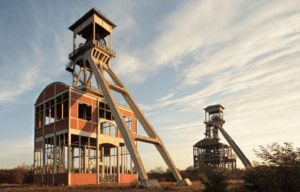Landscape design for people and biodiversity: a case from a post-mining area
Designing landscapes, Hoge Kempen National Park, BE - Source: Johan Van Den Bosch presentation
During the Conference 2019 in Latvia, EUROPARC held a number of workshops to discuss diverse topics relevant for Protected Areas management. In case you have not attended, or want to read about their outcomes, a series of online articles summarises the content of some of these workshops.
Including artefacts in Protected Areas
As an appetizer, Johan Van Den Bosch (Coordinator at Hoge Kempen National Park), explained the concept of the only National Park in Belgium, in which cultural landscapes and anthropogenic artefacts, like sand- and gravel pits, former coalmines, etc., are fully included and managed in the Protected Area. They are like a ‘matrix’ in which biodiversity is present and ecological processes take place.
Cultural landscapes and anthropogenic artefacts become a ‘matrix’ for biodiversity and ecological processes.
Visitor facilities are situated outside, and even some distance away from the National Park. In a wish to bring these facilities, so-called ‘Gateways to the National Park’, closer to the Park itself, policy-makers agreed to establish ‘grey zones’ between the gateway and the Protected Area.

Source: Johan Van Den Bosch presentation
This resulted in a so-called expansive, rather than an invasive concept of visitor management and infrastructure. Specifically in very densely populated areas, this seems to be the only way to establish large Protected Areas and places good for people and for biodiversity. It enables to create simultaneously economic growth in tourism and new space for nature conservation.
Download the presentation: How can landscape design mimic nature to create places good for people and biodiversity?
In Europe, nature is a cultural phenomenon
…and the role of people creating nature – as well as destroying it – cannot be ignored. Our landscapes are like a clay tablet, where traces of past stories contribute to the present picture. What we do, add or remove, adds further layers into the future. Appreciation of nature connects aesthetics with cultural memory, as well as biodiversity.
It’s a great challenge for the management of Protected Areas to acknowledge the idea that
a landscape is like a biography of people living and working in it.
There is no problem with adding a new, 21st century-chapter to this biography. But make sure that there isn’t a chapter missing!

Hoge Kempen. Author: Barbara Pais
When we have the opportunity to create landscapes “from scratch”, like in post-mining areas, quarries, artificial coast-defending island, former brown-fields, natural forms and patterns result in more attractive landscapes.
But the main challenge is to kick-start ecological colonisation and succession, rather than establishing patterns and landforms by ‘gardening’.
Landscape design for people and biodiversity
Most managing agencies of Protected Areas agree that visitors who are enjoying the park are very welcome. It contributes to the public support, health care, local economy…
Unfortunately, it is sometimes seen as a ‘burden’; something to be in line with the will of policy-makers, rather than a core-issue of the management plan. It’s important to get rid of the false idea that the ecosystems and biodiversity are in a perfect state of conservation as long as people stay far away from them.
A good landscape design can create new places which are profitable for both people and biodiversity.

Mining towers as landscape memorials at the Hoge Kempen National Park (BE) Source: Johan Van Den Bosch presentation
While creating new habitats for endangered species is difficult, sometimes almost impossible and/or very costly, the habitat for nature-lovers is rather easy and even cheap (compared with other habitat restoration) to create. Everyone who is familiar with human behaviour knows what people going out for a nature-experience need: a viewpoint, diversity in landscapes, water ponds and sand dunes where they can play… and a pub!
When creating new habitats for nature lovers, it’s in the interest of both people and nature, to make it as natural and diverse as possible. Finally, creating places of beauty will be the most important ‘trigger’ for the broader public to become engaged in nature protection.
Give visitors a great and real intense experience, not a second hand ‘forest’ without any attractiveness.
